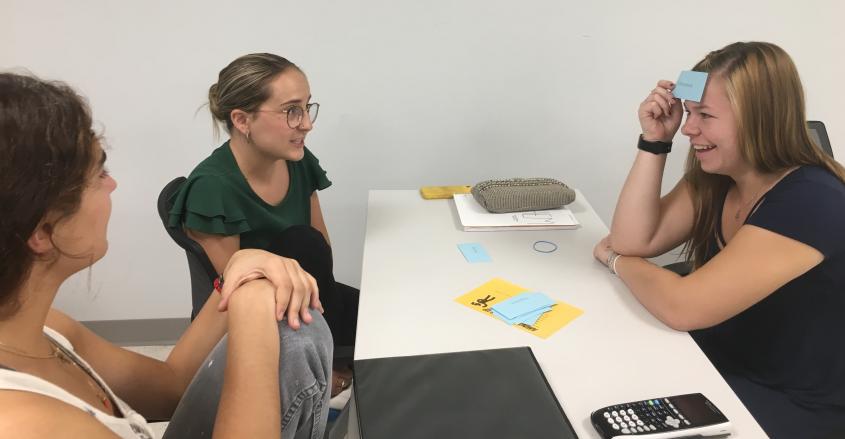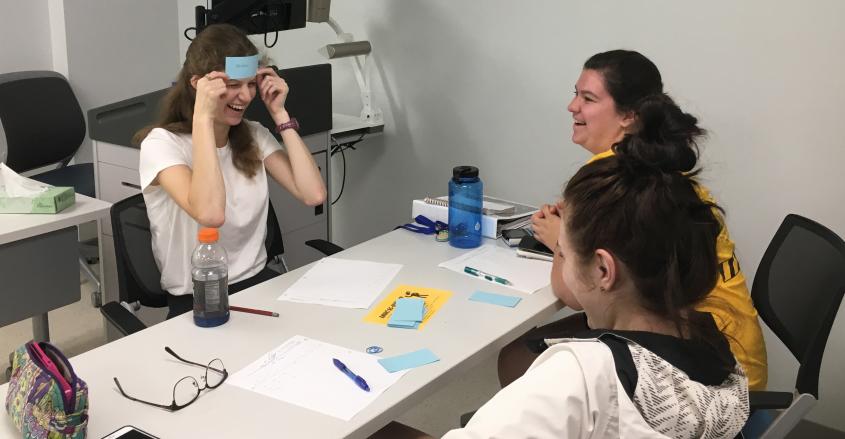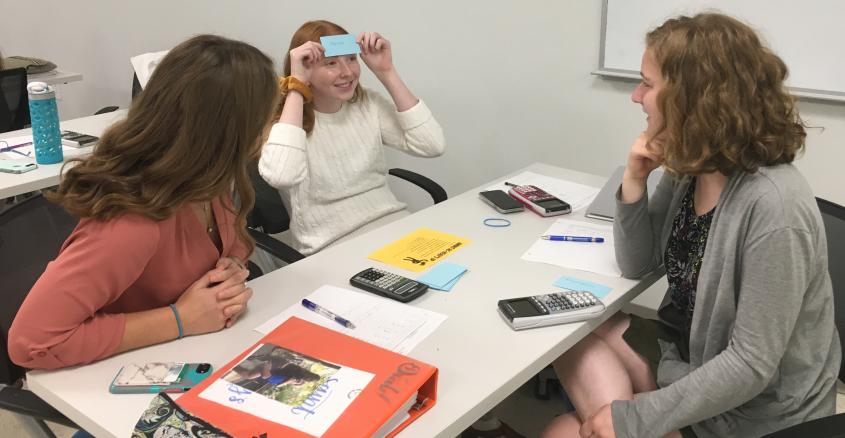A Professor’s Publication on a Better Way to Study
Saint Mary's Stories
Developing a study routine can be hugely beneficial in college, but sometimes study habits encourage memorization over actual understanding. Jen Fishovitz, PhD, assistant professor of chemistry at Saint Mary’s College noticed the ways her students were struggling with learning the amino acids in her Biochemistry course, and wanted to provide them with a better way to study the material.
As Fishovitz reviewed chemical education literature, she was reading a lot about the benefits of active learning over passive information transfer and decided to “flip” her classroom. In Fishovitz’s “flipped” classroom, she records her lectures and students watch them before coming to class. This allows Fishovitz to use class time for active learning exercises and working with the students.
With the new classroom approach, Fishovitz was also able to dedicate more time to in-class reviews before exams. She adapted the popular “Heads Up” charades game into a study tool for her students.
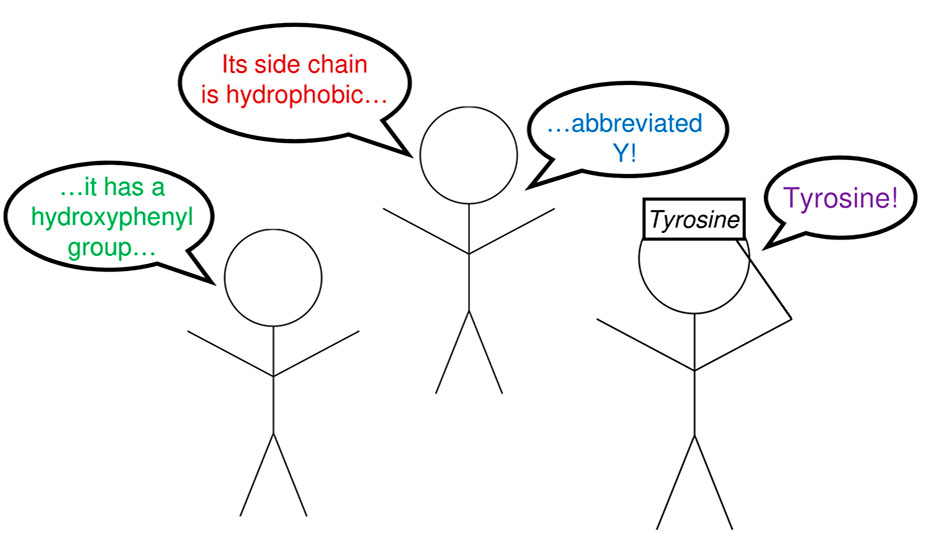 She gave students flashcards with the entire amino acid name and then students held the card to the forehead while their classmates gave them clues to help them understand the name of the amino acid. In groups of three to four students, her biochemistry class was full of laughter and creativity as the students explained the properties of the amino acid. There is a required clue order, which helps students move beyond memorization to higher-order learning modes, by challenging them to offer the most difficult clues first. If their classmate is having trouble, they can offer easier clues, such as the three-letter abbreviation after five or more clues.
She gave students flashcards with the entire amino acid name and then students held the card to the forehead while their classmates gave them clues to help them understand the name of the amino acid. In groups of three to four students, her biochemistry class was full of laughter and creativity as the students explained the properties of the amino acid. There is a required clue order, which helps students move beyond memorization to higher-order learning modes, by challenging them to offer the most difficult clues first. If their classmate is having trouble, they can offer easier clues, such as the three-letter abbreviation after five or more clues.
When Fishovitz tweeted about how well the initial games had gone in her class, she attracted the attention of a fellow chemistry professor at Mercer University, Kathryn Kloepper, PhD. The two began to work together on adapting the heads up activity for other aspects of their curriculum. They implemented the activities and surveyed students at the end of the semester to gauge the effectiveness of the activity.
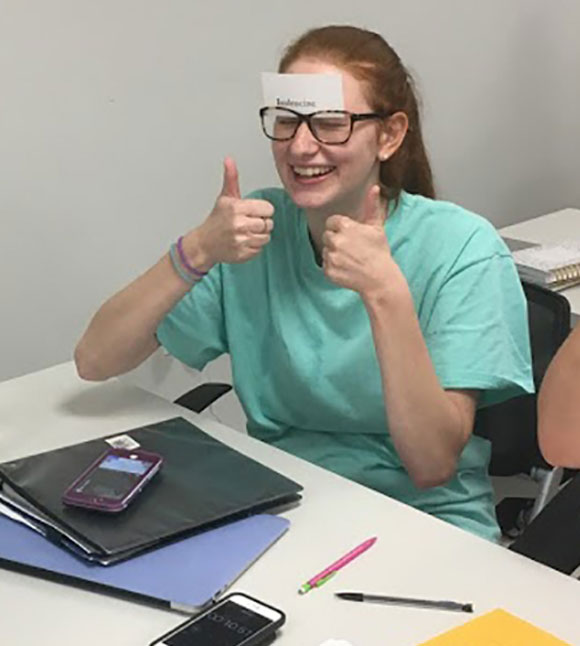 Fishovitz and Kloepper, also worked with Garland Crawford, PhD, at Mercer University, to develop and test/try the activities and gather their findings in an article that was recently published in the Journal of Chemical Education.
Fishovitz and Kloepper, also worked with Garland Crawford, PhD, at Mercer University, to develop and test/try the activities and gather their findings in an article that was recently published in the Journal of Chemical Education.
According to the article, “Overall, student perception of the guided heads-up activities
implemented at the two institutions was positive.” The data gathered from the students showed that there were three main outcomes for guided heads-up activities: promote student learning, facilitate student−student interactions, and encourage metacognition.
Additionally, students can be resistant to new, more challenging learning methods, but it is important to struggle with and practice with unfamiliar material, and this activity allows them to work with their classmates and promote deeper learning.
“A lot of students can get by with memorizing material, and then being successful on the exams, but they’re not necessarily able to recall that information down the line, when it comes time for the MCAT or the GRE, or even a graduate level class, or when they get a job,” Fishovitz said. “An activity like this, which gives the students guidance in how to think deeper about these things is really helpful to them.”
Because for Fishovitz she’s not just trying to help them pass her class, she wants to prepare her students for their future. Better understanding the foundations of biochemistry is just one way the activity can be used. Due to the pandemic, it’s harder to adapt for Zoom and other virtual platforms that allow you to see yourself, but Fishovitz notes that these activities can be applied to a wide range of subjects and classes beyond the discipline of chemistry.

